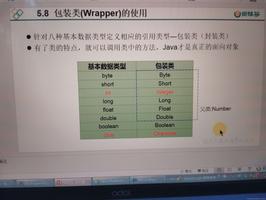扫二维码自动跳转【java】详解
这个帖子网上很多了,但是都是讲理论知识,我呢,喜欢搞代码。既然搞完了,就贴出来备忘一下,也可以分享一下。
重复理论步骤:
1、进入网站-生成UUID
2、跳转到二维码页面(二维码包含UUID)
3、二维码页面写一个js,自动请求服务器查询二维码是否被扫
4、服务器收到请求,查询,如果还没被扫,进入等待,先不返回结果
5、一旦被扫,立即返回结果,页面js收到响应,做后续处理
OK,步骤是这样的没错,不过有一点缺点,步骤3中如果请求超时怎么办。
这个微信web登录有示例,服务器被请求后,持续等待25秒左右,然后结束请求,js端重新发起请求,就这样25秒为周期,不停发起长链接请求。
看下微信web的长连接
不说了,贴代码了,我这里使用的是spring-boot ,spring版本是4.3.6
1、生成UUID
@RequestMapping("/")
String index(HttpServletRequest request,HttpServletResponse response)
{
System.out.println("进入首页,先生成UUID");
request.setAttribute("uuid", UUID.randomUUID());
return "pages/index";
}
2、生成二维码,页面部分
<body>
<div class="main">
<div class="title">
<img id="qrcode" alt="" src="">
</div>
<div id="result" class="title"></div>
</div>
</body>
页面js:
$(function() {
// 文档就绪
$("#qrcode").attr("src", "/qrcode/${uuid}");
$("#result").html("使用手机扫描二维码");
keepPool();//一加载就进入自动请求-见步骤3
});
3、页面js自动请求服务器查询是否被扫
function keepPool(){
$.post("/pool", {
uuid : "${uuid}",
}, function(data) {
if(data=='success'){
$("#result").html("登录成功");
}else if(data=='timeout'){
$("#result").html("登录超时,请刷新重试");
}else{
keepPool();
}
});
}
4、服务器收到请求,这里服务器端的事情还是蛮多的,分解一下
1、首先要生成二位码,对应 $("#qrcode").attr("src", "/qrcode/${uuid}");
2、生成二位码后,需要将uuid放入到缓存,我是将UUID作为建,新建一个对象作为值(这里可以采用redis),我为了学习方便,自己写了个缓存
3、查询是否被扫,对应$.post("/pool", { uuid : "${uuid}"}......,这时候有一个等待的功能(缓存中的对象来控制,这个对象的键就是UUID)
4、被扫后,立马通知等待者(这里是通过缓存中的对象来通知消息的)
5、上面说了好多次对象了,对的,都是同一个,接着贴代码了
4.1-4.2 生成二位码,我这里使用的google的zxing
@RequestMapping("/qrcode/{uuid}")
@ResponseBody
String createQRCode(@PathVariable String uuid,HttpServletResponse response)
{
System.out.println("生成二维码");
String text = "http://172.20.16.194:8080/login/"+uuid;
int width = 300;
int height = 300;
String format = "png";
//将UUID放入缓存
ScanPool pool = new ScanPool();
PoolCache.cacheMap.put(uuid, pool);
try
{
Map<EncodeHintType, Object> hints= new HashMap<EncodeHintType, Object>();
hints.put(EncodeHintType.CHARACTER_SET, "utf-8");
//hints.put(EncodeHintType.MARGIN, 1);
hints.put(EncodeHintType.ERROR_CORRECTION, ErrorCorrectionLevel.H); //容错率
BitMatrix bitMatrix = new MultiFormatWriter().encode(text, BarcodeFormat.QR_CODE, width, height,hints);
MatrixToImageWriter.writeToStream(bitMatrix, format, response.getOutputStream());
} catch (WriterException e)
{
// TODO Auto-generated catch block
e.printStackTrace();
} catch (IOException e)
{
// TODO Auto-generated catch block
e.printStackTrace();
}
return null;
}
看到对象ScanPool没有,这就是那个对象,PoolCache是那个缓存,既然说了,先贴这两个类。
ScanPool.java
public class ScanPool
{
//创建时间
private Long createTime = System.currentTimeMillis();
//登录状态
private boolean scanFlag = false;
public boolean isScan(){
return scanFlag;
}
public void setScan(boolean scanFlag){
this.scanFlag = scanFlag;
}
/**
* 获取扫描状态,如果还没有扫描,则等待固定秒数
* @param wiatSecond 需要等待的秒数
* @return
*/
public synchronized boolean getScanStatus(){
try
{
if(!isScan()){ //如果还未扫描,则等待
this.wait();
}
if (isScan())
{
return true;
}
} catch (InterruptedException e)
{
// TODO Auto-generated catch block
e.printStackTrace();
}
return false;
}
/**
* 扫码之后设置扫码状态
*/
public synchronized void scanSuccess(){
try
{
setScan(true);
this.notifyAll();
} catch (Exception e)
{
// TODO Auto-generated catch block
e.printStackTrace();
}
}
public synchronized void notifyPool(){
try
{
this.notifyAll();
} catch (Exception e)
{
// TODO Auto-generated catch block
e.printStackTrace();
}
}
public Long getCreateTime()
{
return createTime;
}
public void setCreateTime(Long createTime)
{
this.createTime = createTime;
}
}
PoolCache.java
public class PoolCache
{
//缓存超时时间 10分钟
private static Long timeOutSecond = 600L;
//每半小时清理一次缓存
private static Long cleanIntervalSecond = 1800L;
public static Map<String, ScanPool> cacheMap = new HashMap<String, ScanPool>();
static{
new Thread(new Runnable()
{
@Override
public void run()
{
// TODO Auto-generated method stub
while (true)
{
try
{
Thread.sleep(cleanIntervalSecond*1000);
} catch (InterruptedException e)
{
// TODO Auto-generated catch block
e.printStackTrace();
}
clean();
}
}
public void clean(){
if(cacheMap.keySet().size() > 0){
Iterator<String> iterator = cacheMap.keySet().iterator();
while (iterator.hasNext())
{
String key = iterator.next();
ScanPool pool = cacheMap.get(key);
if(System.currentTimeMillis() - pool.getCreateTime() > timeOutSecond * 1000){
cacheMap.remove(key);
}
}
}
}
}).start();
}
}
4.3.查询是否被扫
@RequestMapping("/pool")
@ResponseBody
String pool(String uuid){
System.out.println("检测["+uuid+"]是否登录");
ScanPool pool = PoolCache.cacheMap.get(uuid);
if(pool == null){
return "timeout";
}
//使用计时器,固定时间后不再等待扫描结果--防止页面访问超时
new Thread(new ScanCounter(uuid)).start();
boolean scanFlag = pool.getScanStatus();
if(scanFlag){
return "success";
}else{
return "fail";
}
}
这里看到,有一个防止页面请求超时的,是写了一个计时器,达到固定时长就停掉,返回一个fail,这里我就不贴了,有需要的可以下载我源码看
4.4.被扫后
@RequestMapping("/login/{uuid}")
@ResponseBody
String login(@PathVariable String uuid){
ScanPool pool = PoolCache.cacheMap.get(uuid);
if(pool == null){
return "timeout,scan fail";
}
pool.scanSuccess();
return "scan success";
}
ok,结束
源码下载地址:http://xz.jb51.net:81/201905/yuanma/springboot(jb51.net).rar
以上所述是小编给大家介绍的java扫二维码自动跳转详解整合,希望对大家有所帮助,如果大家有任何疑问请给我留言,小编会及时回复大家的。在此也非常感谢大家对网站的支持!
以上是 扫二维码自动跳转【java】详解 的全部内容, 来源链接: utcz.com/z/354620.html









